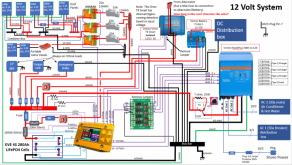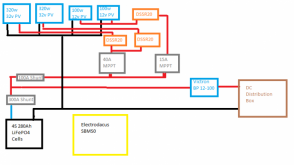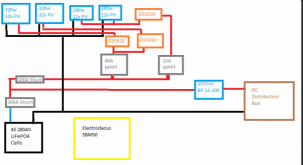FilterGuy
Solar Engineering Consultant - EG4 and Consumers
OK.... The moment you start talking about a 3K inverter, it is not a small system any longer.
Here is a design I recently did for a gentleman from Florida that built it and is now exploring the South West in his RV.

The design is more than you need. Here is a simplified version that is closer to your needs:

You would want to tweak it to match your needs. Also, If you don't like the DSSR20 that goes with the Electrodacus SBMS0, you could use a Victron SCC..
I attached a PDF of the two drawings as well.
Finally, if you are putting it on a boat.... don't cheap out on the equipment. Get marine grade or it won't hold up.
Here is a design I recently did for a gentleman from Florida that built it and is now exploring the South West in his RV.

The design is more than you need. Here is a simplified version that is closer to your needs:

You would want to tweak it to match your needs. Also, If you don't like the DSSR20 that goes with the Electrodacus SBMS0, you could use a Victron SCC..
I attached a PDF of the two drawings as well.
Finally, if you are putting it on a boat.... don't cheap out on the equipment. Get marine grade or it won't hold up.





